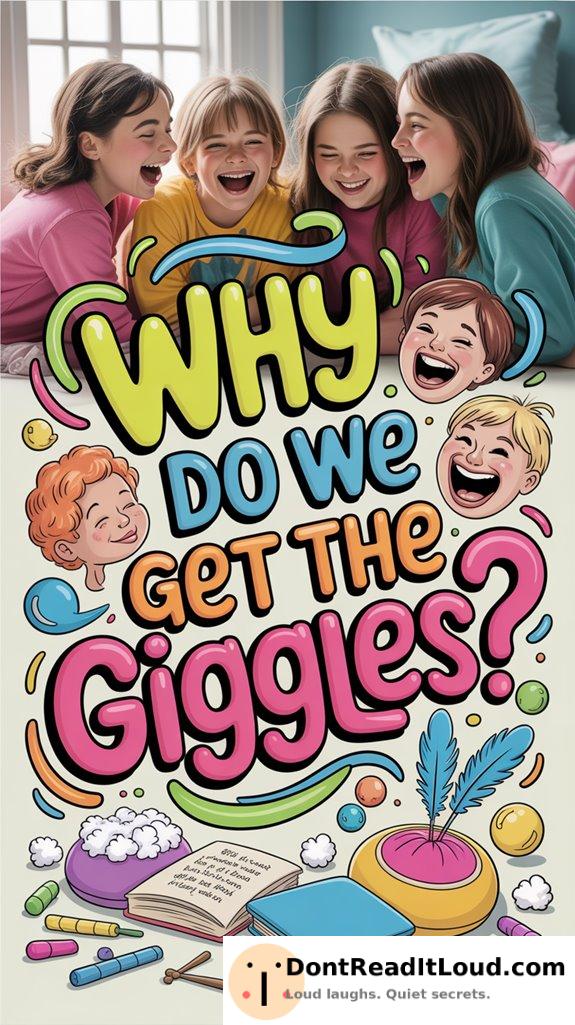
When you get the giggles, it’s more than a simple reaction; it involves complex brain chemistry, social cues, and psychological triggers. Laughter releases endorphins, lifting your mood and helping people connect. It often springs from surprise or shared amusement, helping to ease tension and bring people closer. This collective laughter activates your brain’s pleasure centers, flooding you with dopamine and boosting happiness. Ever wonder how cultural differences or our evolutionary past influence this? There’s even more to explore!
The Science Behind Laughter
Although laughter might appear to be a simple reaction, it’s actually a complex physiological process. When you laugh, your brain releases endorphins, giving you a joyful boost.
But what makes us laugh in the first place? Scientists think laughter served an evolutionary purpose, helping early humans connect and communicate for survival.
Cultural background also shapes what people find funny. What cracks you up might completely puzzle someone from another culture.
Social Dynamics and Giggling
Laughter isn’t just for amusement; it plays a key role in how we connect with others. Picture yourself among friends—someone tells a joke, and suddenly everyone’s giggling. That’s social bonding at its best! Sharing laughter acts like a secret handshake, a non-verbal signal that says, “We’re together in this.” Giggling helps melt away awkwardness and draws people closer.
Social conformity also comes into play. Have you noticed how easily laughter spreads? When one person starts giggling, others often join in, even if they missed the joke. You join the laughter to feel included and show you’re part of the group.
Psychological Triggers of Giggles
What makes giggles erupt at the most unexpected times? Imagine you’re in a serious meeting, and a random thought suddenly amuses you. Instantly, giggles bubble up, hard to suppress. Often, this reaction is your brain’s way of easing embarrassment. After narrowly avoiding an awkward moment, laughter offers quick relief. It’s like your mind’s gentle exhale, dressed up as laughter.
But giggles aren’t just about avoiding discomfort. They also help people bond. Sharing laughter with someone forges an immediate sense of connection. When you and your friends burst out laughing at an inside joke, you’re reinforcing your social ties.
Neurological Responses to Humor
While giggles bring people together and relieve stress, a remarkable neurological process is happening in your brain. When you perceive something funny, your brain’s chemistry comes alive.
Dopamine, the neurotransmitter linked to pleasure, takes center stage during this moment. Hearing a good joke activates your humor-processing areas and triggers a release of this feel-good chemical.
As a result, the world feels lighter, and laughter follows naturally. This response goes beyond simple enjoyment—it promotes social connection.
Our brains are wired to share laughter and spread joy among others. So go ahead and laugh; your brain is built for it!
Conclusion
You’ve learned that giggles come from a mix of science and social factors. Your brain responds to humor by releasing chemicals that boost your mood and promote bonding. Psychologically, unexpected or silly moments can set off giggles, providing a quick break from stress. When you find something funny, your brain’s pleasure centers light up, making laughter feel rewarding. So, next time you giggle, enjoy how biology and social connection work together.



